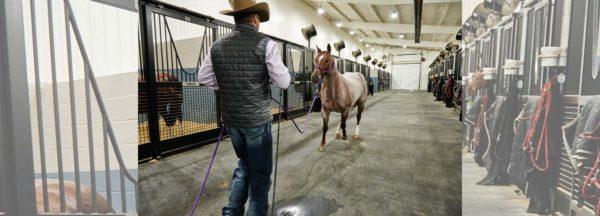Training Tip: Horses That Paw and Get Antsy In Cross-Ties

Horses that paw in cross-ties or constantly fidget – twisting their bodies from side to side and biting on the ropes – generally do so because they have an abundance of energy. Usually, it’s the horse that was brought out of the stall and put in the cross-ties so that his owner can groom him and saddle him for a training session. He’s been cooped up in the stall and hasn’t been turned out and he’s pawing because he’s anticipating getting out of the barn.
Instead of taking the horse straight out of the stall and putting him in cross-ties, move his feet first and get him to use the thinking side of his brain. Because you’re likely in a barn, you’ll do low-impact exercises that allow you to move the horse’s feet in a restricted area. Back your horse up and down the barn aisle with energy in his feet. Yield his hindquarters. Then ask him to yield his forequarters. When he’s tuned in to you, back him up into position with the cross-ties and tie him up.
More than likely, getting the “fresh” off the horse will solve the problem. However, if he starts to paw or fidget in the cross-ties, immediately take him out of the cross-ties and put his feet to work again. When you put him to work, you have to do so with urgency. If you let him shuffle his feet and stop and visit with the horses in the stalls next to the aisle, you’ll be wasting your time. You need to make it clear that pawing and fidgeting in the cross-ties will result in work.
You want to make the cross-ties look like the easy part of the day. At the cross-ties, he gets to stand still and relax. When he’s off the cross-ties, he has to hustle his feet and sweat. It won’t take long for your horse to realize that it’s a much better deal to stand quietly at the cross-ties.
It’s the exact same concept we use when teaching a horse to crave being on a trailer. We hustle his feet outside of the trailer and then let him stand still and relax inside of it. Before long, the horse is practically dragging us to get on the trailer.
Have a horsemanship question or looking for more training tips? Check out the No Worries Club.
